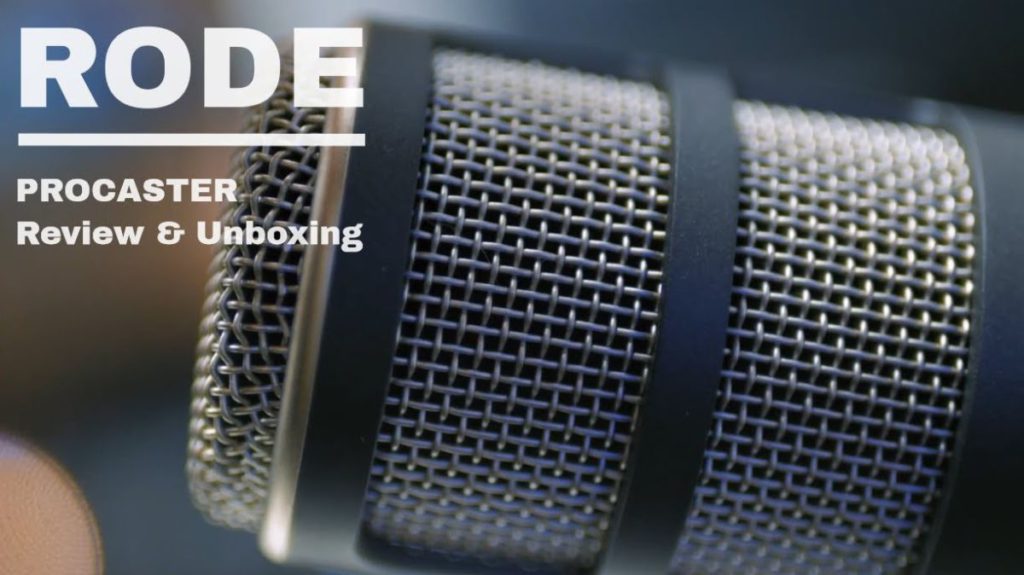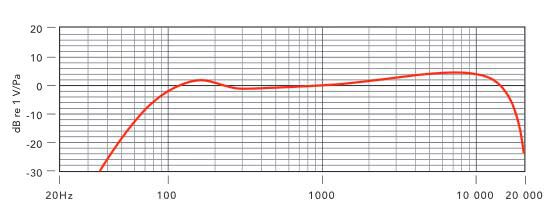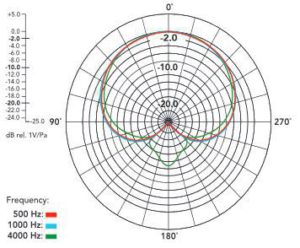Rode ProCaster – The Ultimate Entry Level Podcasting Mic [REVIEW]
Rode Procaster - Overview

Rode Procaster - Specifications
- Acoustic Principle: Dynamic
- Polar Pattern Cardioid

- Address Type: End
- Frequency Range: 75Hz - 18kHz
- Output Impedance: 320Ω
- Sensitivity: -56.0dB re 1 Volt/Pascal (1.60mV @ 94 dB SPL) +/- 2 dB @ 1kHz
- Weight: 745.00g
- Dimensions: 214.00mm H x 53.00mm W x 53.00mmD
- Output: XLR

- Warranty: 1 year with free extension to 10 years following registration here
What's in the box?
- Internal shock mounting of capsule for low handling noise
- Internal pop-filter to reduce plosives
- Includes stand mount, 3/8 inch adaptor and zip pouch
Rode Procaster - PROS
- Broadcast quality sound
- High output dynamic capsule
- Balanced, low impedance output
- Internal shock mounting of the capsule for low handling noise
- Internal pop-filter to reduce plosives
- Robust, all-metal construction
- 10 year extended warranty when you register your microphone
Rode Procaster - CONS
- Large and heavy
- Pop filter not working great
- Low signal output
- Needs a good preamp to drive the mic
- bracket build quality could be improved
- No Pad
- No high pass filter
Detailed Review
Frequency Response
The Rode Procaster’s frequency response ranges from 75Hz – 18kHz. It is to note that it tapers down in the lows and then cuts off at the 75Hy mark. However, this most likely has been done to counteract the increased bass response when leveraging the proximity effect. And comparing it to my other mics, it does not get muffled in the lows when using it super close up.
While it tapers down to the lows, it also has a little bit of a bump around 200Hy and even a boost in the high frequencies around 5-10kHz. These EQ characteristics are very targeted for voice and might take away some tweaks for you to do in post.

Procaster Polar Pattern
The Rode Procaster is configured to have a cardioid polar pattern. This setup is a classic configuration for voice microphones not only in live situations but also in a studio environment. Being a front addressed microphone, it picks up all sounds from the front and rejects almost all sound signals coming from the backside (except some high frequencies over 4kHz).
This pickup and rejection pattern combined with the sensitivity characteristics of being a dynamic microphone makes the procaster ideal to use in broadcast scenarios, which are usually not noise-free like a vocal booth would be.

Working The Procaster Microphone
This microphone wants to be worked hard! By that, I mean, you want to get close to it. In normal circumstances, you do not need an additional shock mount, so, get it close!
I have to say, I personally like front addressed microphones at my desk for the voice-over work I do or when doing Skype interviews. Even though the procaster is a large-diaphragm mic, it takes up much less of your view (also, because a shock mount is not needed).
Tapering off the bass frequencies comes in handy when being up close! While I like some of my condenser mics a bit better in sound, they are more transparent than the procaster; they also tend to get very “boomy” when being super close, which you have to do when you want rich sound while eliminating as much background noise and reverb from the room.
Driving the Procaster
Being a dynamic microphone, it is to be expected to use more gain to drive the microphone. That said, you might want to get a dedicated preamp, a FetHead, or a CloudLifter to reach enough pre-amplification and eventually get a good signal to noise ratio.
Like other known broadcasting microphones, the Rode Procaster is a gain hungry beast. It does not require as much as a Shure 7B, yet it is not far off either. You will need about 50-56db of gain to drive the mic for spoken dialog, depending on how loud you are and how close you want to get.
You should definitely make sure to use a dedicated preamp with it or a clean signal boosting in-between amp instead of only your interface‘s preamps.
Flaws
Like with a lot of things in life, everything comes with drawbacks, and so it is with microphones. It is about managing the advantages and disadvantages, or better it is about setting up goals while minimizing unwanted side effects.
Best Use Case / Verdict
How we think this product is best used.
More Gear Recommendations
Shure SM 7B
Rode Procaster Dynamic Vocal Microphone
Shure SM58 dynamic microphone
Behringer Ultravoice XM8500
Electro-Voice RE320
Electro-Voice RE20
Rode Podcaster USB Microphone
Samson Q2U
Heil PR40
MXL dynamic broadcasting microphone
Rode Procaster
Rode Shockmount
Rode Desk Arm
Cloudlifter
Rode Podcaster
Shure SM7B
Focusrite USB Interface
Dedicated Pre-Amps: DBX286s ART ProMPAII
